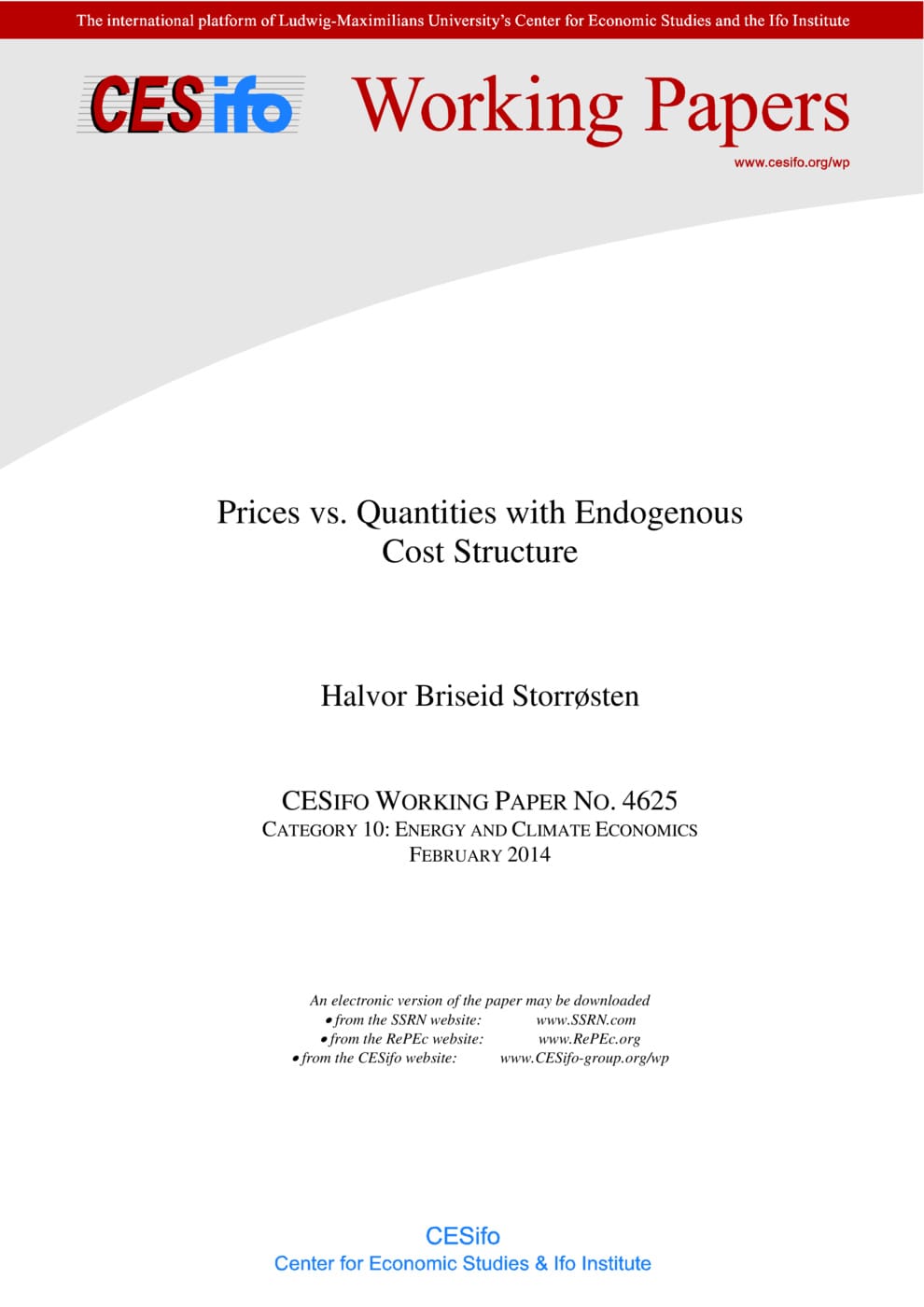Prices vs. Quantities with Endogenous Cost Structure
CESifo, Munich, 2014
CESifo Working Paper No. 4625

Authorities often lack information for efficient regulation of the commons. This paper derives a criterion comparing prices versus tradable quantities in terms of expected welfare, given uncertainty, optimal policy and endogenous cost structure. I show that one cannot determine which regulatory instrument that induces the highest expected welfare based on the relative curvatures of the cost and benefit functions alone. Furthermore, optimal policy involves different production (or price) targets across the regulatory instruments, and does not equalize marginal costs and expected marginal benefits under prices. The reason is that firms choose a cost structure which induces exaggerate fluctuations in consumption of the public good under prices, and the regulator has to compensate for this when determining optimal policy. Because no such negative externality arises under quantities, the relative performance of prices is deteriorated. A numerical illustration suggests significant impact. Finally, either regulatory instrument may induce the highest technology investment levels.
Energy and Climate Economics
Resources and Environment